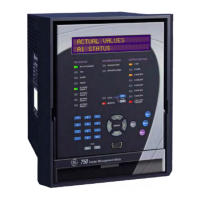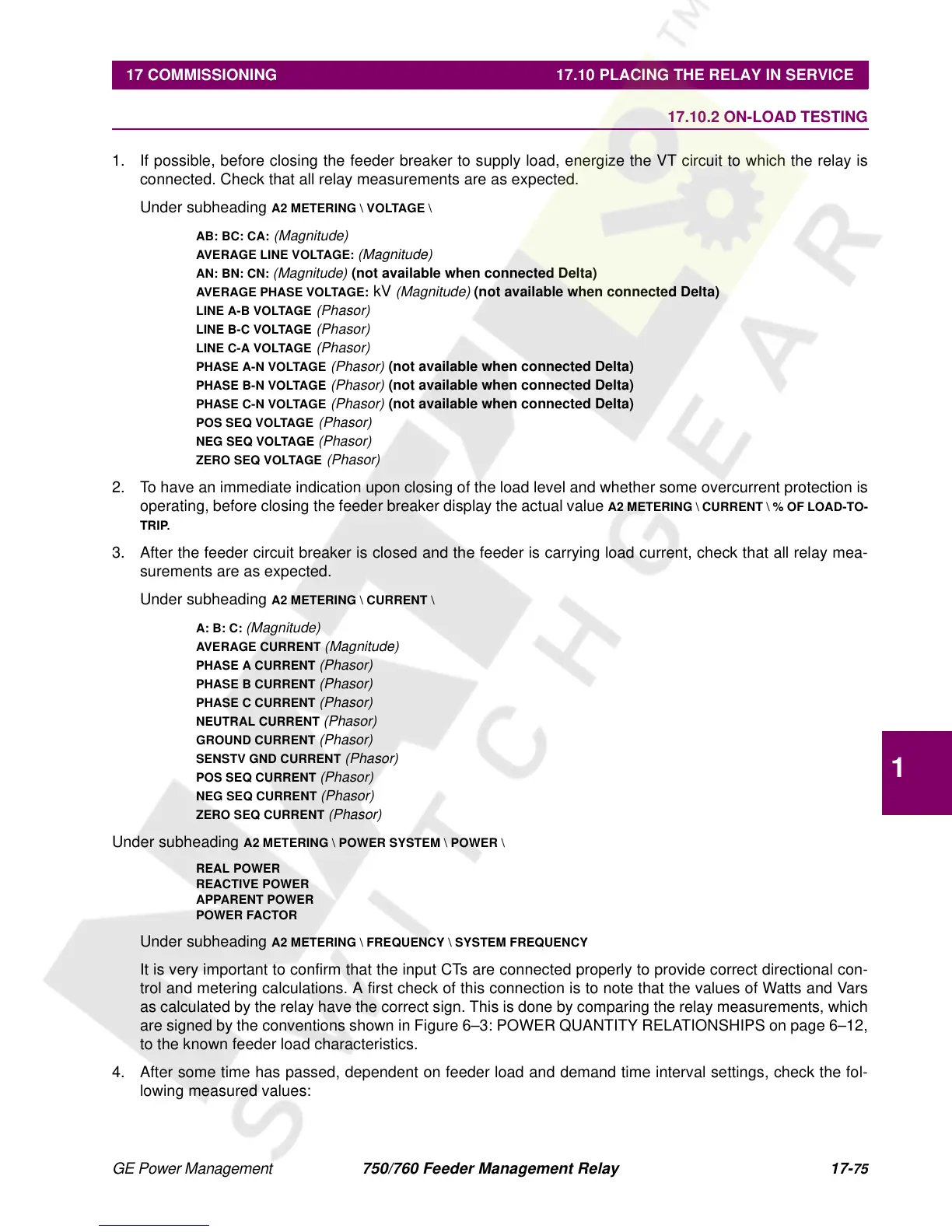GE Power Management 750/760 Feeder Management Relay 17-
75
17 COMMISSIONING 17.10 PLACING THE RELAY IN SERVICE
17
17.10.2 ON-LOAD TESTING
1. If possible, before closing the feeder breaker to supply load, energize the VT circuit to which the relay is
connected. Check that all relay measurements are as expected.
Under subheading
A2 METERING \ VOLTAGE \
AB: BC: CA:
(Magnitude)
AVERAGE LINE VOLTAGE:
(Magnitude)
AN: BN: CN:
(Magnitude)
(not available when connected Delta)
AVERAGE PHASE VOLTAGE:
kV
(Magnitude)
(not available when connected Delta)
LINE A-B VOLTAGE
(Phasor)
LINE B-C VOLTAGE
(Phasor)
LINE C-A VOLTAGE
(Phasor)
PHASE A-N VOLTAGE
(Phasor)
(not available when connected Delta)
PHASE B-N VOLTAGE
(Phasor)
(not available when connected Delta)
PHASE C-N VOLTAGE
(Phasor)
(not available when connected Delta)
POS SEQ VOLTAGE
(Phasor)
NEG SEQ VOLTAGE
(Phasor)
ZERO SEQ VOLTAGE
(Phasor)
2. To have an immediate indication upon closing of the load level and whether some overcurrent protection is
operating, before closing the feeder breaker display the actual value
A2 METERING \ CURRENT \ % OF LOAD-TO-
TRIP
.
3. After the feeder circuit breaker is closed and the feeder is carrying load current, check that all relay mea-
surements are as expected.
Under subheading
A2 METERING \ CURRENT \
A: B: C:
(Magnitude)
AVERAGE CURRENT
(Magnitude)
PHASE A CURRENT
(Phasor)
PHASE B CURRENT
(Phasor)
PHASE C CURRENT
(Phasor)
NEUTRAL CURRENT
(Phasor)
GROUND CURRENT
(Phasor)
SENSTV GND CURRENT
(Phasor)
POS SEQ CURRENT
(Phasor)
NEG SEQ CURRENT
(Phasor)
ZERO SEQ CURRENT
(Phasor)
Under subheading
A2 METERING \ POWER SYSTEM \ POWER \
REAL POWER
REACTIVE POWER
APPARENT POWER
POWER FACTOR
Under subheading
A2 METERING \ FREQUENCY \ SYSTEM FREQUENCY
It is very important to confirm that the input CTs are connected properly to provide correct directional con-
trol and metering calculations. A first check of this connection is to note that the values of Watts and Vars
as calculated by the relay have the correct sign. This is done by comparing the relay measurements, which
are signed by the conventions shown in Figure 6–3: POWER QUANTITY RELATIONSHIPS on page 6–12,
to the known feeder load characteristics.
4. After some time has passed, dependent on feeder load and demand time interval settings, check the fol-
lowing measured values:

